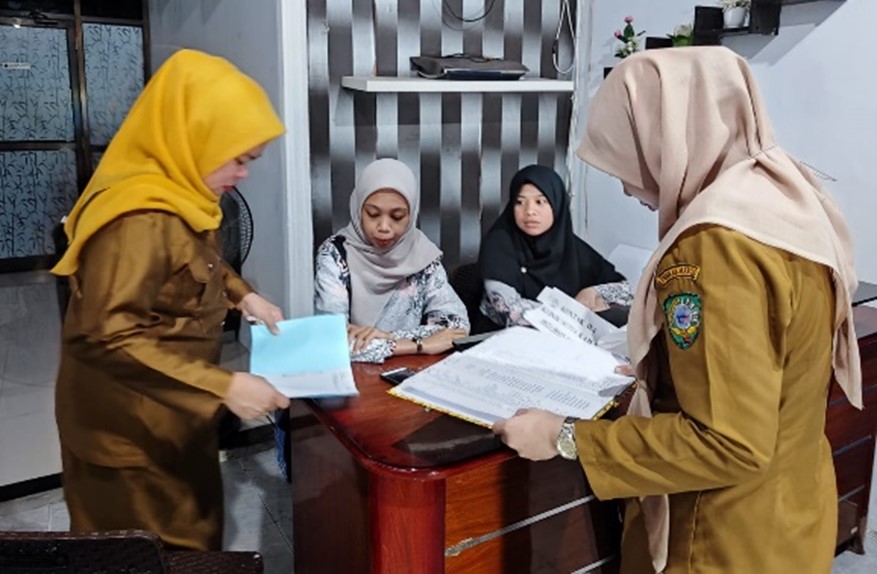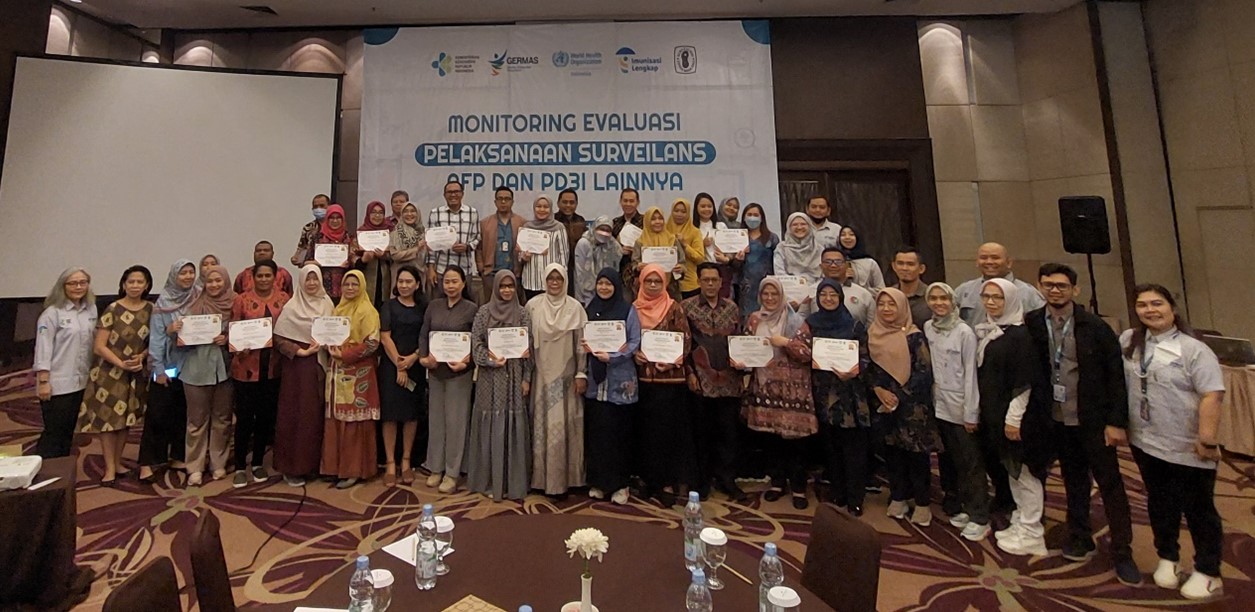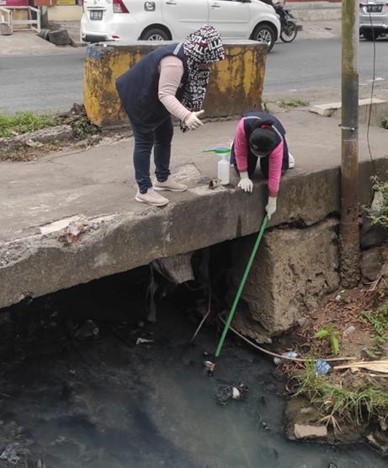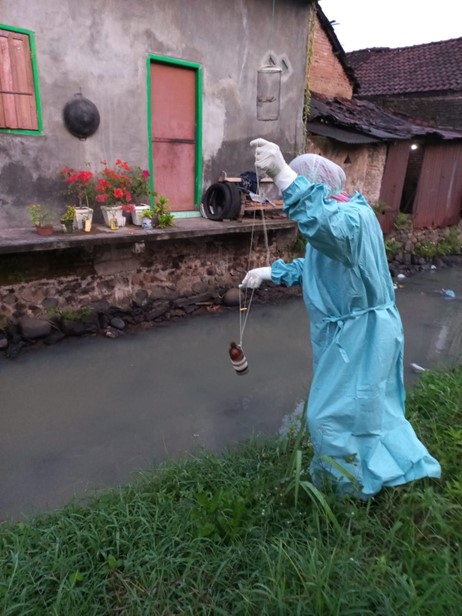Surveillance is key to understand the impact and epidemiology of a disease such as rotavirus and polio. However, insufficient rotavirus surveillance and underperforming polio surveillance sites on a national level indicate critical gaps in Indonesia’s disease surveillance system. Meanwhile, certain provinces and districts are faced with unique local challenges, such as lack of adequate skills and knowledge among health workers, limited involvement of private health facilities and low commitment among different stakeholders, hampering the development of an optimal surveillance system to identify and detect disease outbreaks early.
To bolster VPD surveillance in Indonesia, throughout 2023 WHO and the Ministry of Health (MoH) strengthened District Health Offices’ (DHO) capacity and collaborated with key stakeholders, including surveillance officers, paediatricians, and hospital associations.

Maros DHO team visited Setia Kawan private clinic to evaluate its surveillance network performance and ensure all VPD cases are reported. Credit: Maros DHO/Munira
A pivotal meeting with the Indonesian Paediatric Society (IDAI) and the Indonesian Hospital Association (PERSI) resulted in a commitment from both organizations for active VPD surveillance implementation in provinces. WHO also supported MoH in monitoring surveillance officers, providing refresher training, and addressing barriers.
Simultaneously, WHO assisted MoH in establishing rotavirus surveillance in Jakarta and South Kalimantan. For polio surveillance, WHO and MoH identified suitable sites and reassessed underperforming ones. Two sites in East Java were recommended to continue out of eight evaluated.

Provincial surveillance officers from provinces that achieved the national VPD surveillance indicator targets receiving an award from the Ministry of Health. Credit: MoH/VPD surveillance working group
At the subnational level, initiatives like the Hospital Record Review and outreach to private clinics and IDAI branches enhanced VPD monitoring.
In South Sulawesi, WHO strengthened Maros and Gowa DHO officers' capacity for weekly hospital surveillance and aided Maros DHO in expanding partnerships with private clinics. "This is our effort to reactivate VPD surveillance and promptly identify cases in hospitals. Gowa DHO and hospital focal points will routinely conduct weekly active hospital surveillance," said Sudirma, Surveillance Officer of Gowa DHO.

Environmental surveillance sample collection by Balai Teknik Kesehatan Lingkungan dan Pengendalian Penyakit Manado in an open canal site in Manado, North Sulawesi. Credit: MoH/Wati Sangadi

Polio environmental surveillance sample collection in Konto River, Jombang, East Java by Balai Teknik Kesehatan Lingkungan dan Pengendalian Penyakit Surabaya. Credit: MoH/ Retno Widiastuti
The collaborative efforts, supported by WHO and other key stakeholders, have laid a strong foundation for VPD surveillance in Indonesia. The focus now shifts to sustaining progress through regular coordination, monitoring, and evaluation.
Looking ahead, the follow-up plan involves practical steps such as collaborative partnerships, expanding surveillance networks, setting up new environmental surveillance sites, and capacity-building initiatives.
This activity is supported by the Australian government and the United States of America, through USAID.
Written by the following WHO Indonesia personnel:
- Joshua Harmani, National Professional Officer for Vaccine Preventable Diseases Surveillance
- Muhammad Rinul Wijaya, Data Assistant for Vaccine Preventable Diseases Surveillance
- Ni’mah Hanifah, Data Assistant for Vaccine Preventable Diseases Surveillance
- Novi Anggraeni, Vaccination Technical Officer
- Rodri Tanoto, National Professional Officer for New Vaccine
- Yurniati, IVD Consultant
